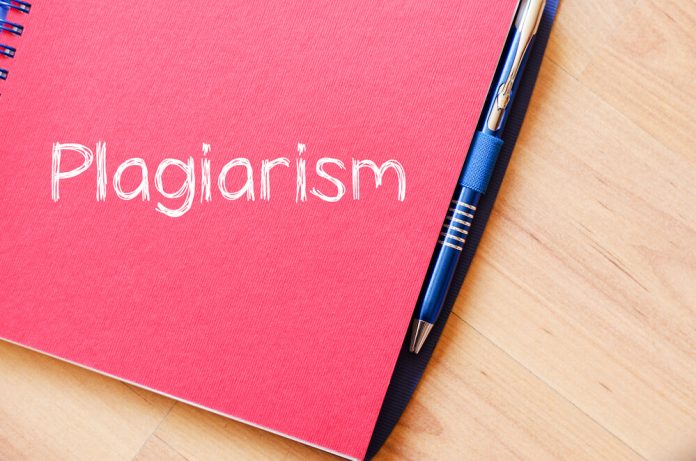This article has been published by Sneha Mahawar.
Table of Contents
Introduction
Academia and plagiarism have a relationship that goes back a long way. The progress of humanity is driven by the people who are always looking ahead and trying to find out new things and improve the older ones. These are the researchers that discovered so many of the things that we use commonly nowadays.
Unfortunately, for every honest man, there is a dishonest man too. People committed acts of academic dishonesty where they would steal the works of other people and portray them as their own. In the olden days when detecting such theft was close to impossible, plagiarists would claim all the glory for themselves.
This would severely dishearten the real owner of that research and kill their motivation to work. So, laws were created to deal with plagiarism and plagiarists in order to safeguard the real owners of research. In this article, we will check out how these laws are implemented in real life today.
What counts as plagiarism
Plagiarism can be defined in many ways, but one of the most common definitions used today is the one by Oxford University. It is as follows.
“Plagiarism is presenting work or ideas from another source as your own, with or without the consent of the original author, by incorporating it in your own work without full acknowledgment”
That definition is a bit wordy, but it explains what is plagiarism quite thoroughly. However, it does not explain how many types of plagiarism there are. One can commit plagiarism in many different ways and each method is considered quite severe. Let’s check out the most common types of plagiarism listed by Editpad.
Plagiarism can be divided into four main categories. They are as follows:
- Direct Plagiarism. In this type of plagiarism, the perpetrator uses the content verbatim from a source without acknowledging the original author at all. It is the most straightforward type of plagiarism.
- Mosaic Plagiarism. In this type of plagiarism, the perpetrator uses small bits and pieces of work from different sources and uses them in their own work without acknowledgment. The bits and pieces can be just a few sentences or even entire passages. It is a more heinous type of plagiarism as it actively tries to hide dishonesty.
- Accidental Plagiarism. This is any plagiarism that is done due to mistakes. Common ways in which accidental plagiarism occurs are due to incorrect citations, missing citations, and coincidental similarity in wording.
- Source Based Plagiarism. This is basically direct plagiarism, except the perpetrator cites the work as if it was their own. Basically, the perpetrator tries to pass the source they copied as their own previous work.
These are some major types of plagiarism that plague academia today. Now, let’s learn how modern systems deal with plagiarism.
What are the consequences of plagiarism in academia
Nowadays there are checks and balances that help academic authorities to check any academic work for plagiarism. The most common method is the usage of AI check plagiarism tools. A plagiarism checker is capable of comparing any given work against the myriad sources present online in a matter of minutes.
Since they are powered by AI, they can detect even the most elusive sorts of plagiarism (such as mosaic plagiarism). The best tools available can even highlight the exact parts of your text that are plagiarized and they also provide the name and link of the sources that the content was copied from. (You can check plagiarism in your text from this popular online tool:https://www.editpad.org/tool/plagiarism-checker)
So, it is very easy to find out if somebody has committed plagiarism or not. Now, that we know how easy it is to check for plagiarism, let’s see what kind of punishments are given by academic institutes.
- Providing a Failing Grade. A common example of an academic institute is a university. In a university, all work done by the students counts as academic work. That includes assignments, essays, and even theses. If any of these works are found to be plagiarized, then the institute is within its rights to reject that work and provide a failing grade to the perpetrator.
- Recalling an Awarded Degree. If an alumnus of a university is found to be a plagiarist, then the university is within its rights to recall their awarded degree, i.e., the perpetrator loses their qualifications.
- Expulsion. If a student is found to be committing plagiarism multiple times, their institute can expel them for it.
- Blacklisting. An institute can also blacklist known plagiarists and prevent their admission into other colleges thereby blocking their careers.
Scientific journals are also academic bodies, and they can also deal with plagiarists in some ways.
The simplest way is that they can deny a plagiarized work and not publish it. If the person who submitted the work is a habitual problematic actor then publishers can also blacklist them and warn other publishing bodies to not entertain them. This can block the fake academic career of a plagiarist.
How to avoid plagiarism by understanding plagiarism law
It is easy to avoid plagiarism once you know what counts as plagiarism. Here are a few simple laws that you need to remember to ensure that you never commit plagiarism again.
- Citation. Citation is basically providing enough information about the source from which you used some content so that readers know that this is supporting content. Citations have two parts, a small in-text part, and a more in-depth reference at the end of a work that provides complete information about the source.
Citing sources prevents plagiarism because it acknowledges the original owner of the content.
- Quotation. Quotes are small pieces of text taken verbatim from the source. They are written between two quotation marks that look like this “”. Quotations are also followed by citations.
- Paraphrasing. When something is too long to quote, you may paraphrase it instead. Just cite it at the end to prevent plagiarism.
Paraphrasing also helps with reducing plagiarism if it was simply due to similar wording.
By using these three things in their work, a writer can prevent plagiarism from occurring and safeguard themselves against its consequences.
Conclusion
Hopefully, now you have a better understanding of plagiarism law and how most organizations deal with it. The law we discussed in this article is more or less the same around the world, but if you want to learn more about Indian law with regard to plagiarism, then you can read this work for further information.
Students of Lawsikho courses regularly produce writing assignments and work on practical exercises as a part of their coursework and develop themselves in real-life practical skills.
LawSikho has created a telegram group for exchanging legal knowledge, referrals, and various opportunities. You can click on this link and join:
Follow us on Instagram and subscribe to our YouTube channel for more amazing legal content.
 Serato DJ Crack 2025Serato DJ PRO Crack
Serato DJ Crack 2025Serato DJ PRO Crack









 Allow notifications
Allow notifications



